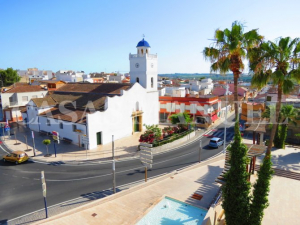Benijófar
Benijofar Area Guide – Discover This Charming Spanish Town
Nestled in the heart of the Costa Blanca, Benijofar is a picturesque Spanish town that blends traditional charm with modern convenience. Popular among expats and holidaymakers, this vibrant destination offers a relaxed Mediterranean lifestyle, stunning scenery and excellent amenities. Whether you’re considering a move to Benijofar or planning a visit, our Benijofar Area Guide covers everything you need to know.
A Brief History of Benijofar
Benijofar’s name is of Arabic origin, meaning “Son of the Pearl,” hinting at its rich Moorish history. Originally an agricultural settlement, the town thrived thanks to the Segura River, which provided fertile land for citrus and vegetable farming. Over the years, Benijofar has evolved into a sought-after residential area, maintaining its Spanish heritage while welcoming a growing international community.
Why Choose Benijofar?
Benijofar offers an authentic Spanish experience with a touch of modernity. With its peaceful surroundings, proximity to beaches and easy access to essential services, it’s no surprise that it has become a hotspot for expats and retirees. Here’s what makes Benijofar special:
- Fantastic Location: Just 10 minutes from the beautiful beaches of Guardamar del Segura.
- Excellent Climate: Enjoy over 300 days of sunshine per year.
- Great Connectivity: Only 30 minutes from Alicante Airport.
- Vibrant Community: A mix of locals and expats create a welcoming atmosphere.
Things to Do in Benijofar
- Explore the Charming Town Square
The Plaza de la Constitución is the heart of Benijofar, where you’ll find a traditional church, local cafés and friendly Spanish hospitality. The square is a great place to enjoy a coffee while soaking up the town’s relaxed vibe.
- Visit Parque Cañada Marsá
This beautiful park is ideal for a leisurely stroll or picnic. The park features scenic walking trails, a pond with ducks and plenty of green spaces. It’s a peaceful retreat perfect for nature lovers.
- Discover Benijofar’s Weekly Market
Every Tuesday, Benijofar comes alive with its bustling street market, where you can buy fresh local produce, clothing and artisanal goods. It’s an excellent way to experience Spanish culture and pick up some delicious Mediterranean ingredients.
- Enjoy Fine Dining and Tapas
Benijofar boasts an impressive selection of restaurants offering everything from traditional Spanish tapas to international cuisine.
- Golfing in the Nearby Courses
Golf enthusiasts will love the nearby La Marquesa Golf Course in Ciudad Quesada, just a short drive from Benijofar. This well-maintained course offers a fantastic playing experience with stunning views.
Attractions Near Benijofar
While Benijofar itself is a tranquil town, it is conveniently close to some of the Costa Blanca’s top attractions:
Guardamar del Segura (10 minutes away)
Famous for its golden sandy beaches, Guardamar is a coastal paradise offering beachfront restaurants, lively bars and a beautiful natural park with sand dunes.
Torrevieja (15 minutes away)
A bustling city with a vibrant marina, shopping centers and the famous Torrevieja Salt Lakes, known for their unique pink waters and flamingos.
Elche (25 minutes away)
Home to the UNESCO-listed Palmeral (Palm Grove), Elche is a city rich in history, culture and stunning landscapes.
Living in Benijofar
Benijofar is ideal for those seeking a peaceful yet well-connected place to live. The town has excellent healthcare services, schools, supermarkets, bars and restaurants, making it a convenient and desirable location for families and retirees alike.
Final Thoughts on Benijofar
Whether you’re looking for a new home, a holiday destination or simply exploring Spain’s hidden gems, Benijofar is a fantastic choice. Its blend of Spanish tradition, modern amenities and proximity to stunning beaches makes it one of the most attractive towns in the Costa Blanca.

RESERVED – Renovated Bungalow With Roof Terrace in Monte Azul, Benijófar
- €135,000
- ID: 381
- Beds: 2
- Bath: 1
Country Villa In Benijofar
- €475,000
- ID: 401
- Beds: 5
- Baths: 6



